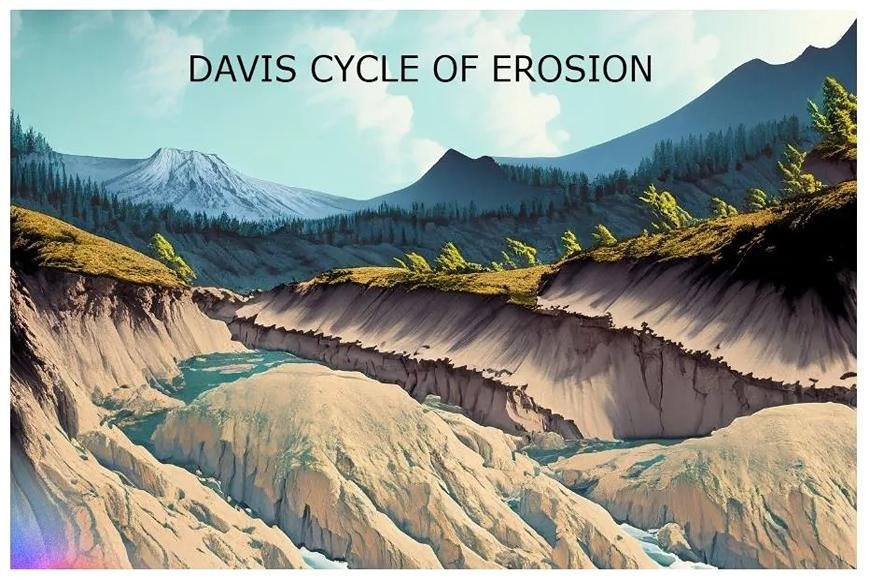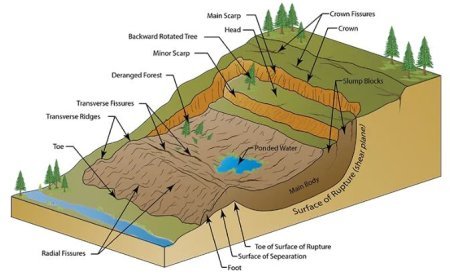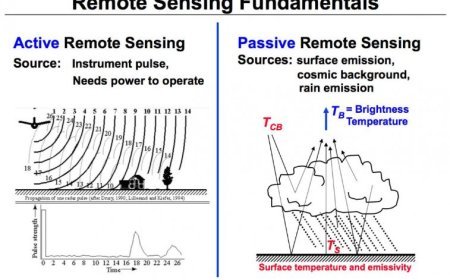DAVIS AND PENCK CYCLE OF EROSION
From Youth to Peneplain: Davis & Penck map landscapes' evolution - Uplift & erosion in action.

Davis’ Cycle of Erosion Theory
- William Morris Davis was an American geographer who created the "Cycle of Erosion" hypothesis of landscape change.
- In 1899, he proposed the idea based on the erosion patterns of American mountain valleys.
- Davis is widely regarded as the father of contemporary geomorphology.
- Landscapes, according to Davis' idea, evolve cyclically through the interaction of three major stages:
Youthful Stage
- This stage is characterised by active uplift, rapid erosion, and the formation of V-shaped valleys and steep slopes.
Mature Stage
- Valleys broaden, slopes grow less steep, and the landscape becomes more mature and mellow as erosion proceeds.
Old Stage
- The terrain becomes rather flat at this stage, with broad river basins, wide floodplains, and low relief features typical.
- Davis' cycle of erosion hypothesis emphasises erosional processes' dominance and proposes that landscapes tend to develop towards an equilibrium state.
- However, this idea has come under fire over the years since many landscapes do not fit exactly into the cyclic model, and external influences such as climate change and tectonics can have a large impact on landscape evolution.
Penck’s Erosion Cycle Theory
- Walther Penck, the son of German geographer Albrecht Penck, was born in Vienna and is credited with further developing and refining the notion of erosion cycles.
- He researched the Davis erosional cycle model and agreed on many points, but differed on the process and stage components (i.e., the Davis erosional model's structure, process, and stages).
- Penck disputed the idea that the stages are not sequential and can stop with rejuvenation.
- In 1924, Walter Penck presented a morphological system model, generally known as the cycle of erosion.
- According to Walter Penck, the endogenic force also disrupts the cycle of erosion through rejuvenation.
- As a result, the erosion cycle is an endless process. According to Davis, the erosional cycle is not time-dependent.
The steps of Penck's erosion cycle are as follows:
Youthful Stage
- This is frequently linked to active tectonic uplift and severe erosion.
- Rivers and glaciers are effective in eroding the environment at this stage, resulting in the construction of V-shaped valleys, steep slopes, and harsh terrain.
- The topography is quite high-relief, with sharp and jagged features.
Mature Stage
- As the terrain changes, erosion rates drop, and landforms begin to shift.
- Valleys develop wider and deeper, while slopes become less steep.
- The scenery becomes more mellow, and the relief lessens as compared to the young period.
Old Stage
- The terrain undergoes more erosion and denudation at this stage, resulting in a smoother, undulating topography with meandering rivers.
Rejuvenation Stage
- If tectonic uplift happens again after the old stage, the landscape enters a rejuvenation stage, during which rivers continue to down-cut and deepen their valleys, resulting in an "entrenched meandering" pattern.
What's Your Reaction?



































